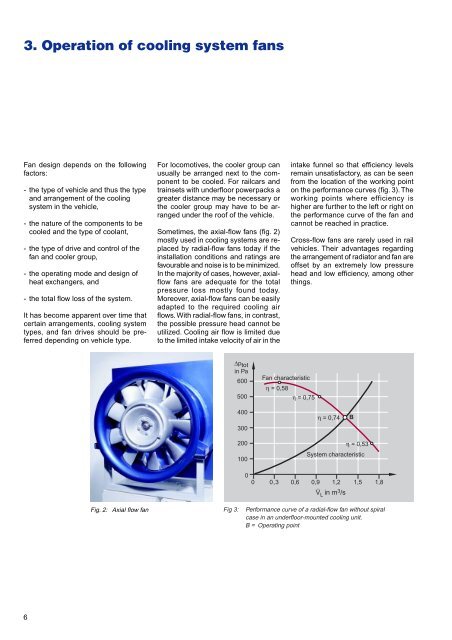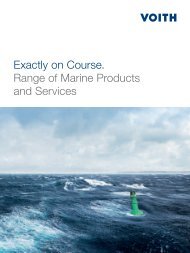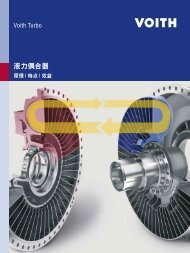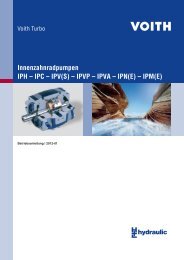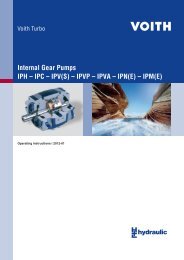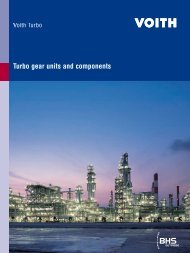Download PDF - Voith Turbo
Download PDF - Voith Turbo
Download PDF - Voith Turbo
You also want an ePaper? Increase the reach of your titles
YUMPU automatically turns print PDFs into web optimized ePapers that Google loves.
3. Operation of cooling system fans<br />
Fan design depends on the following<br />
factors:<br />
- the type of vehicle and thus the type<br />
and arrangement of the cooling<br />
system in the vehicle,<br />
- the nature of the components to be<br />
cooled and the type of coolant,<br />
- the type of drive and control of the<br />
fan and cooler group,<br />
- the operating mode and design of<br />
heat exchangers, and<br />
- the total flow loss of the system.<br />
It has become apparent over time that<br />
certain arrangements, cooling system<br />
types, and fan drives should be preferred<br />
depending on vehicle type.<br />
6<br />
Fig. 2: Axial flow fan<br />
For locomotives, the cooler group can<br />
usually be arranged next to the component<br />
to be cooled. For railcars and<br />
trainsets with underfloor powerpacks a<br />
greater distance may be necessary or<br />
the cooler group may have to be arranged<br />
under the roof of the vehicle.<br />
Sometimes, the axial-flow fans (fig. 2)<br />
mostly used in cooling systems are replaced<br />
by radial-flow fans today if the<br />
installation conditions and ratings are<br />
favourable and noise is to be minimized.<br />
In the majority of cases, however, axialflow<br />
fans are adequate for the total<br />
pressure loss mostly found today.<br />
Moreover, axial-flow fans can be easily<br />
adapted to the required cooling air<br />
flows. With radial-flow fans, in contrast,<br />
the possible pressure head cannot be<br />
utilized. Cooling air flow is limited due<br />
to the limited intake velocity of air in the<br />
∆ptot in Pa<br />
600<br />
500<br />
400<br />
300<br />
200<br />
100<br />
Fan characteristic<br />
η = 0,58<br />
η = 0,75<br />
intake funnel so that efficiency levels<br />
remain unsatisfactory, as can be seen<br />
from the location of the working point<br />
on the performance curves (fig. 3). The<br />
working points where efficiency is<br />
higher are further to the left or right on<br />
the performance curve of the fan and<br />
cannot be reached in practice.<br />
Cross-flow fans are rarely used in rail<br />
vehicles. Their advantages regarding<br />
the arrangement of radiator and fan are<br />
offset by an extremely low pressure<br />
head and low efficiency, among other<br />
things.<br />
η = 0,74<br />
0<br />
0 0,3 0,6 0,9 1,2 1,5 1,8<br />
V L in m 3 /s<br />
Fig 3: Performance curve of a radial-flow fan without spiral<br />
case in an underfloor-mounted cooling unit.<br />
B = Operating point<br />
B<br />
η = 0,53<br />
System characteristic


